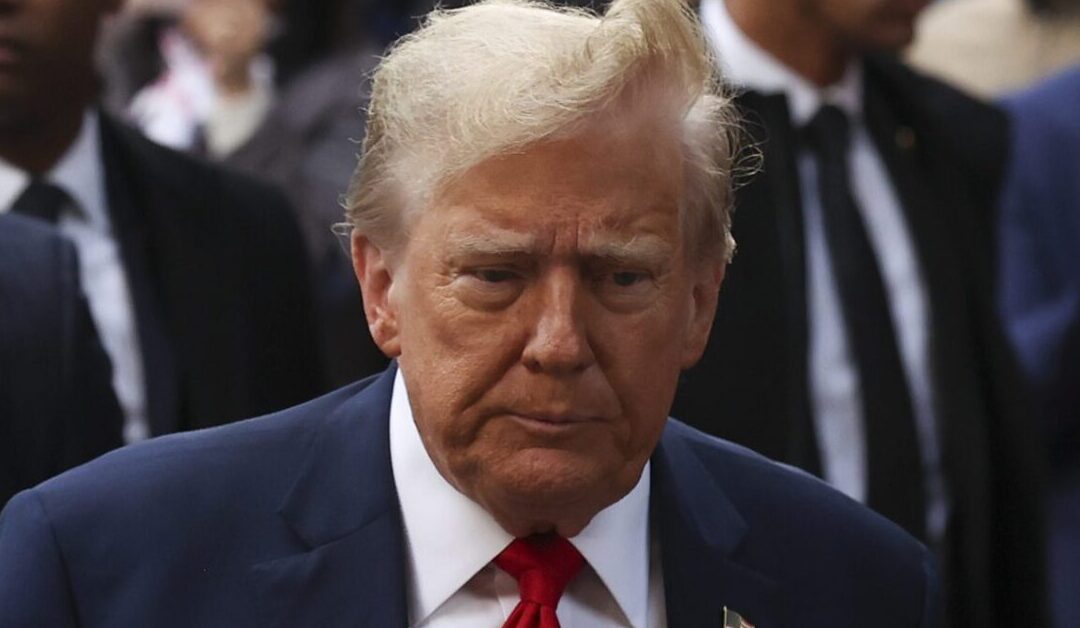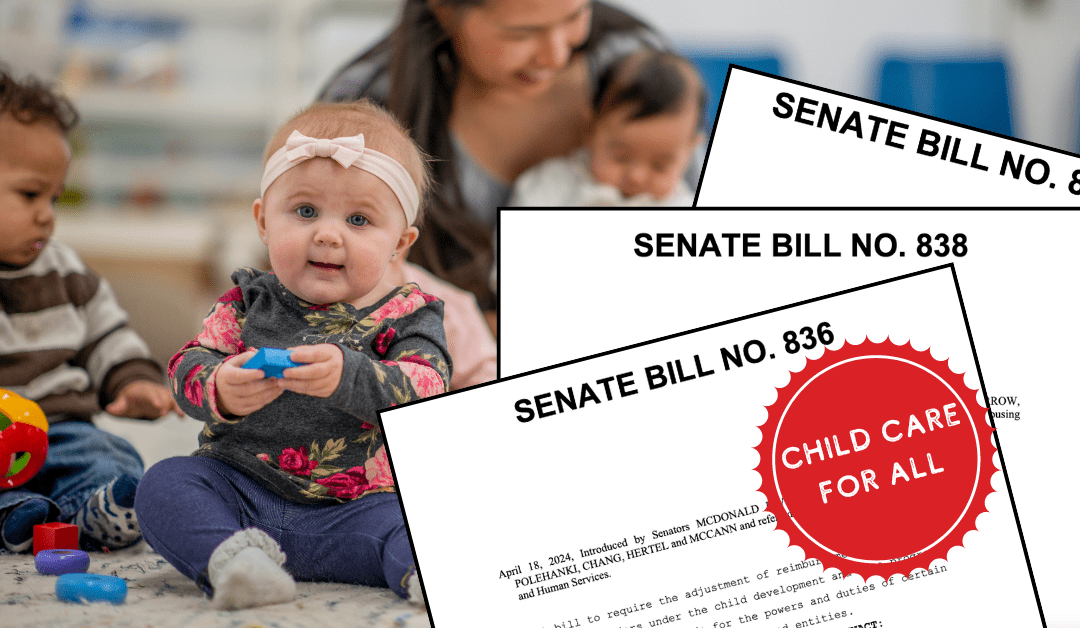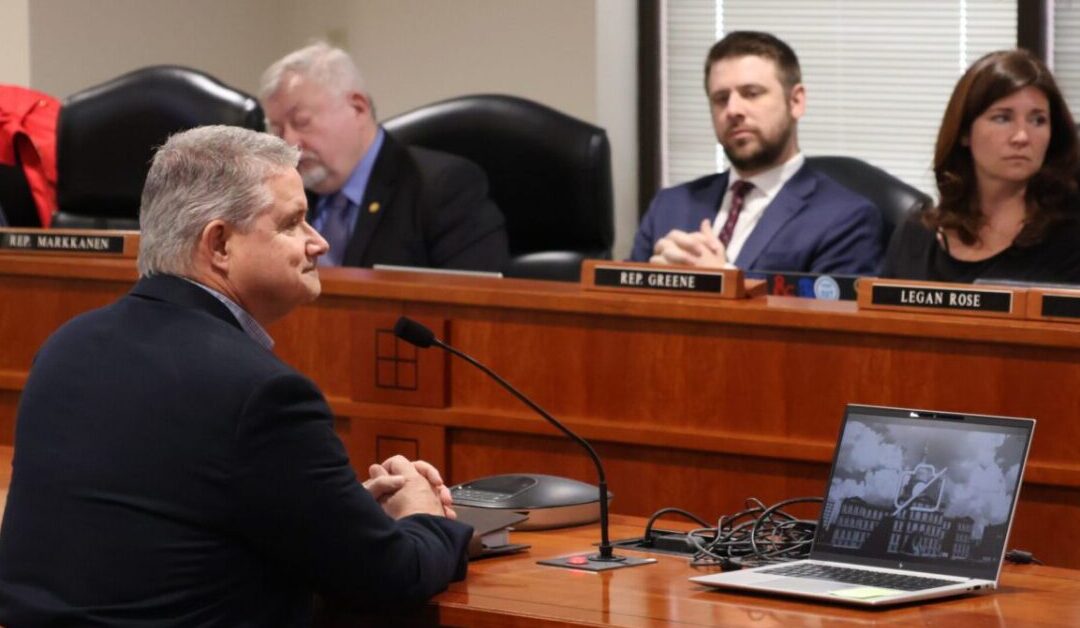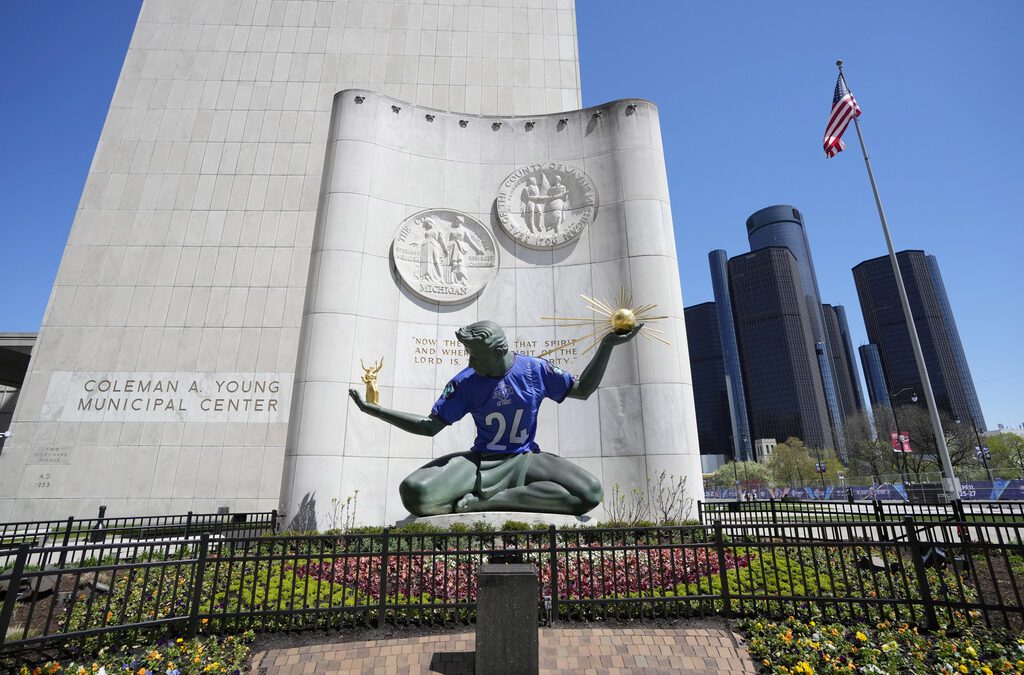
MICHIGAN—Voters are worried about their students in Michigan. According to a 2021 poll, 78% of Michigan respondents are concerned that not every child is getting the educational support they need in the state.
This may be because compared to other states, Michigan’s school systems rank 34th in quality and safety, according to a 2021 report—including a legacy of being the second-most segregated school system in the country.
And as the midterm election season kicks into full swing, every politician comes along with a plan to fix Michigan’s schools—from changing the way public education is funded and catching up on pandemic-related learning losses, to grappling with safety amid a spike in school shootings and quelling a longstanding shortage of teachers.
(Keep reading for a more detailed overview of some of those issues.)
Whoever sits behind the governor’s desk in Michigan over the next four years will play a critical role in protecting public education. Not only will they provide funding recommendations, but they also wield the power to veto aspects of the annual budget—including money that heads to local school districts and their 1.4 million students.
Gov. Gretchen Whitmer (D)

- Endorsed by the Michigan Education Association, the state’s largest school employee union.
- Vetoed a DeVos-backed plan that many likened to voucher programs that take money away from public schools and put it into private schools
- Signed a bill in June giving $37.5 million to schools to do safety assessments in the wake of the Oxford High School shooting, including almost $10 million to Oxford Community Schools
- The budget recently approved under Whitmer gave $19 billion to k-12 schools, a 12% increase, including:
- $450 per-pupil funding increase, up to $9,150 per pupil, the highest per-student increase in state history
- Districts will be reimbursed for 28% of the cost of educating each student with special needs plus 75% of the base per pupil funding amount (about $6,900 per student)
- $52 million for learning loss grants that school districts can apply for
- $168 million for school security
- $747 million to support students who are at risk of falling behind in school
- $25 million in scholarships to teachers in training who commit to working in either public or private Michigan schools, for three to five years after graduation
- Funding MI Future Educator Fellowships—pay up to $10,000 in tuition for 2,500 future Michigan educators every year
- $9,600 stipends per semester for student teachers
Tudor Dixon (R)

- Endorsed and heavily funded by the DeVos family—the same camp that’s pushing a proposal similar to a private school voucher program
- An avid supporter of school choice, which experts say amplifies inequality
- Wants to change the state Constitution to repeal a provision that prohibits government dollars from going to private schools and then divert funding away from public schools
- Announced legislation alongside current GOP legislators that would ban drag queens in public schools, despite providing no instance of this happening
- Has said providing gender-affirming care to transgender children should be banned
- Has called for the prosecution of school administrators who provide children access to “sexually explicit” and “pornographic books”—which implies a ban on books that mention LGBTQ+ topics
- According to her campaign website Dixon also wants to:
- Use some of the $6 billion in federal COVID-19 relief to fund 25 hours of one-on-one or small group tutoring in reading and math for every student in Michigan
- Require school districts to put their curriculum and teaching materials online for parents to see
- Ban school personnel from talking to children from grades kindergarten through third grade about “sex and gender theory secretly behind their parents’ backs”
- Ban transgender girls from competing on girls sports teams
- Enact civic and financial literacy requirements for grade school and develop a civics curriculum that focuses on “America’s founding principles, the United States Constitution and the roles and responsibilities of government as envisioned by America’s founding fathers.”
- Create Education Savings Accounts that allow families to use that state’s per-pupil funding on private, charter, virtual or homeschooling options
- Supports keeping a law in place that holds back third graders who don’t meet literacy standards—a law which Gov. Whitmer has called “destructive”
The Issues
To help voters understand how these platforms align with the educational landscape in Michigan, we’ve compiled some research on some of the biggest issues facing public schools ahead of the election:
Public School Funding
In Short: Michigan’s public school funding isn’t up to par, and this can hurt students.
- The Basics:
- According to the National Center for Education Statistics, between fall 2019 and 2020, public school enrollment dropped from 50.8 million to 49.4 million students, a 3% drop.
- Schools in Michigan are partially funded through a per-pupil allowance given for each student in a given school of $8,700.
- Between 2002 and 2015, Michigan’s per-pupil funding decreased by 22%.
- In 2015, the base per-pupil allowance was $7,391, which would be almost $9,240 today adjusted for inflation. The 2022 per-pupil allowance is $9,150.
- In 2018, the Michigan School Finance Collaborative calculated that Michigan’s per pupil amount should be $9,590—$890 more than the current allowance of $8700. In 2021, they came out with an updated report that recommended $10,421.
- The American Society of Civil Engineers’ latest Infrastructure Report Card gave Michigan schools a D+, for “poor, at risk.”
- “The condition of Michigan’s K through 12 schools varies based on a region’s propensity to support property taxes for schools, and the value of the region’s taxable property. Overall, Michigan’s schools have stabilized and shown slight improvements in enrollment numbers and facility funding. These improvements are driven by the improving economic conditions in Michigan and higher birth rates. As this trend continues, it is anticipated there will be less consolidation and closing of aging school facilities, and a movement will begin towards renovation, expansion, and construction to meet the future needs of Michigan’s student population.”
- During the pandemic, Michigan’s school aid fund had an expected decline of $2.39 billion over the next year and a half because of a nosedive in state tax revenue.
- Special education is underfunded by almost $700 million, a 2017 study found.
- 62% of respondents in a 2021 poll said they are in favor of more investment in children, and 58% said they still would even if their taxes go up.
- How This Impacts Students:
- According to research out of Northwestern University, when school spending was cut during the 2008 recession, it hurt students’ chance of success. When per-student spending was cut by 10% throughout a students’ time in high school, their likelihood of graduating was decreased by three percentage points.
- According to the Education Trust-Midwest, the lifetime earnings of Michigan’s students could increase by $27 billion if their educational achievement matched the national average, of which it currently sits in the bottom half.
Equitable Funding
In Short: Michigan hasn’t been the best at funding the school districts that need it most, which creates inequitable outcomes for students depending on their district.
- The Basics:
- The Education Law Center gave Michigan a “D” for how well it targets funding to impoverished school districts compared to high-income ones.
- According to a report by the Education Trust-Midwest, Michigan provided about 9% more funding to most of its low-income students in recent years, compared to leading state Massachusetts, which will provide up to 105% more with new policies it’s phasing in.
- Michigan is one of 16 states that provide more funding to its lowest poverty school districts compared to its highest poverty districts, giving 5% more to its wealthiest districts.
- How This Impacts Students:
- According to the Education Trust-Midwest, the average scores for low-income, Latino and Black students in Michigan are lower than their higher-income and white White peers.
- Look here to see where you students’ school district ranks
COVID-19 Catch Up
In Short: COVID-19 hurt students’ learning and their mental health, it’s going to cost A LOT to catch up.
- The Basics:
- While the pandemic is now back-of-mind for many, a recent rise in cases may change that as the new school year approaches. Cases are rising in 40 states, including in Michigan.
- 87% of respondents in a 2021 poll said they are concerned about children falling behind in school because of the pandemic
- On average, students were five months behind in math and four months behind in reading, according to an analysis by McKinsey & Company.
- At low-income schools, the gaps were seven months in math and six in reading. Schools where a majority of students are Black or Hispanic also fell behind by six months in all categories except for reading (where majority-Hispanic schools were behind five months).
- Schools that had in-person instruction fared better than those who did hybrid or fully remote options, according to a report from Michigan State University’s Educational Policy Innovation Collaborative. Seven of Michigan’s 56 school districts started the 2020 school year fully in-person, with no online or hybrid options.
- According to a calculator made by Edunomics, a Georgetown University research center, it will cost Detroit Public Schools (Michigan’s largest district), over $115 million in tutoring to remedy the lost learning. See how much it’ll cost your district here.
- How This Impacts Students:
- The American Academy of Pediatrics, the American Academy of Child and Adolescent Psychiatry and the Children’s Hospital Association declared the pandemic-related decline in child and adolescent a national emergency.
- According to a report published by the Centers for Disease Control, 37.1% of students experienced poor mental health, 44.2% experienced persistent feelings of sadness or hopelessness, 19.9% had seriously considered attempting suicide, and 9.0% had attempted suicide.
- Students who felt close to their peers at school had a lower prevalence of poor mental health during the pandemic. Compared with those who did not feel close to persons at school, students who felt close to persons at school had a significantly lower prevalence of poor mental health during the pandemic.
Educator Shortage
In Short: The pandemic worsened a teacher shortage that was already happening.
- The Basics:
- The teacher shortage began during the Great Recession of 2008, and has only continued since. Along with exacerbation from the pandemic, here are the causes:
- A decline in undergraduate teaching degrees––education degrees peaked at over 200,000 in the 1970s, while less than 90,000 were given in 2019.
- Low pay—Michigan ranks 41st in the nation for average teacher starting salary, at $37,820 a year.
- Expanded opportunities for women—36% of all bachelor’s degrees earned by women in 1970 were in education, but only 6% were in 2018.
- Lack of teaching degrees in STEM fields—18% of the 1.8 million bachelor’s degrees earned in 2015-16 were in STEM fields.
- In April 2022, there were 205,000 nationwide job openings in education, compared to 165,000 in May 2021, according to the Bureau of Labor Statistics.
- In May, 94,000 education workers nationwide left the workforce or moved to another industry.
- The Educational Policy Innovation Collaborative said in a report that much of the data provided around the teacher shortage isn’t useful, and that they believe many districts are underreporting their vacancies.
- The teacher shortage began during the Great Recession of 2008, and has only continued since. Along with exacerbation from the pandemic, here are the causes:
- How This Impacts Students:
- According to the Learning Policy Institute, teacher shortages hurt student achievement because schools are forced to cancel courses or staff them with underprepared teachers.
- Underprepared teachers leave their jobs at twice to three times the rate of those who are comprehensively prepared, exacerbating the shortage.
Safety
In Short: School shootings and the reactive drills are hurting students’ mental health.
- The Basics:
- According to Education Week, there have been 27 school shootings this year.
- There have been 119 since 2018, with 34 in 2021.
- In 2021, there were 240 incidents where a gun was brandished or used in a school, according to the Center for Homeland Defense and Security.
- Michigan ranks fifth in the nation for school shootings where at least one victim was killed or wounded since 1970, with 66 shootings.
- Active shooter drills are implemented in more than 95% of k-12 schools nationwide.
- How This Impacts Students:
- According to a 2018 Pew Research Center survey, 25% of teens are very worried about the possibility of a shooting happening at their school, 32% are somewhat worried.
- Exposure to school shootings increases youth antidepressant use by 21.4% in the following two years, according to a 2020 report.
- Students who had been exposed to a shooting at school were more likely to be chronically absent and to be held back a grade.
- Active shooter drills in school are associated with an increase in depression (39%) and stress and anxiety (39%)
- Concerns of death increased by 22%, with words like “blood, pain, clinics” and “pills” featured consistently in social media posts in the three months after the drill.
Politics

Investigator says Trump, allies were uncharged co-conspirators in plot to overturn Michigan election
DETROIT—A state investigator testified Wednesday that he considers former President Donald Trump and his White House chief of staff to be uncharged...

Michigan Dems introduce ‘Child Care for All’ legislation to lower costs for families
Lawmakers say Michigan is facing a ‘child care crisis.’ But a series of bills introduced this month would help to make child care (much) more...

Families of mass shooting victims and survivors call for education on new safe storage laws
BY KYLE DAVIDSON, MICHIGAN ADVANCE MICHIGAN—Parents of victims and survivors of the Oxford High School and Michigan State University shootings on...
Local News

US government agrees to $138.7M settlement over FBI’s botching of Larry Nassar assault allegations
DETROIT—The US Justice Department announced a $138.7 million settlement Tuesday with more than 100 people who accused the FBI of grossly mishandling...

NFL draft has been on tour for a decade and the next stop is Detroit, giving it a shot in spotlight
DETROIT—The NFL draft has taken the show on the road for a decade, giving cities around the country a chance to be in the spotlight. Detroit is on...





